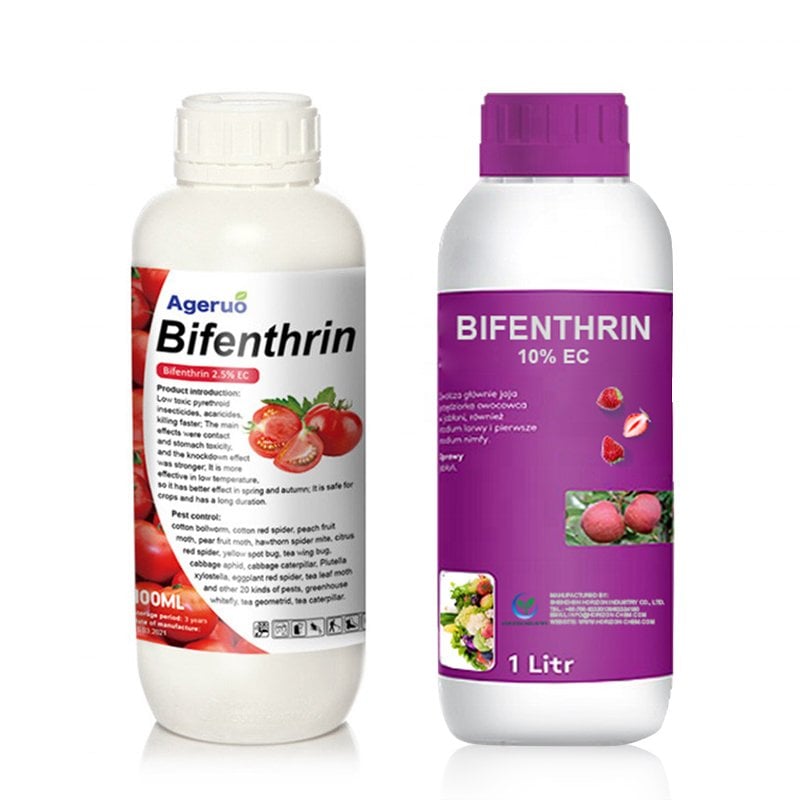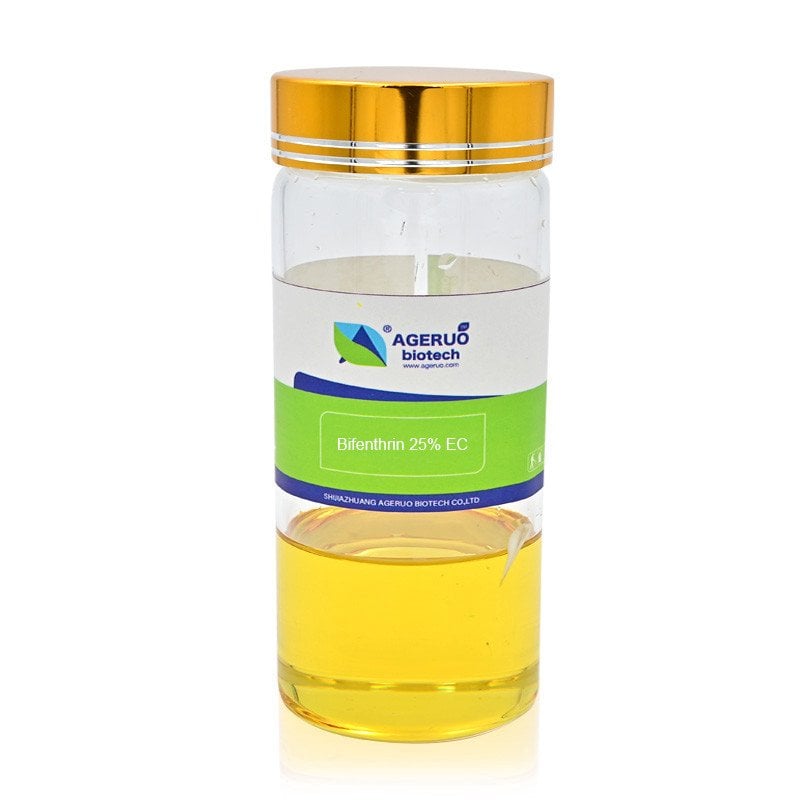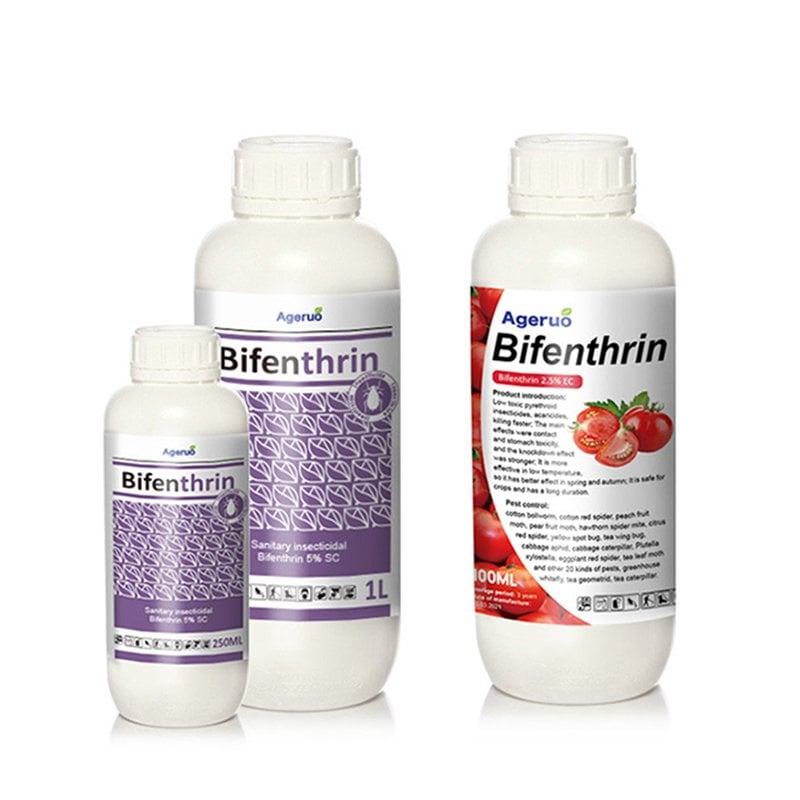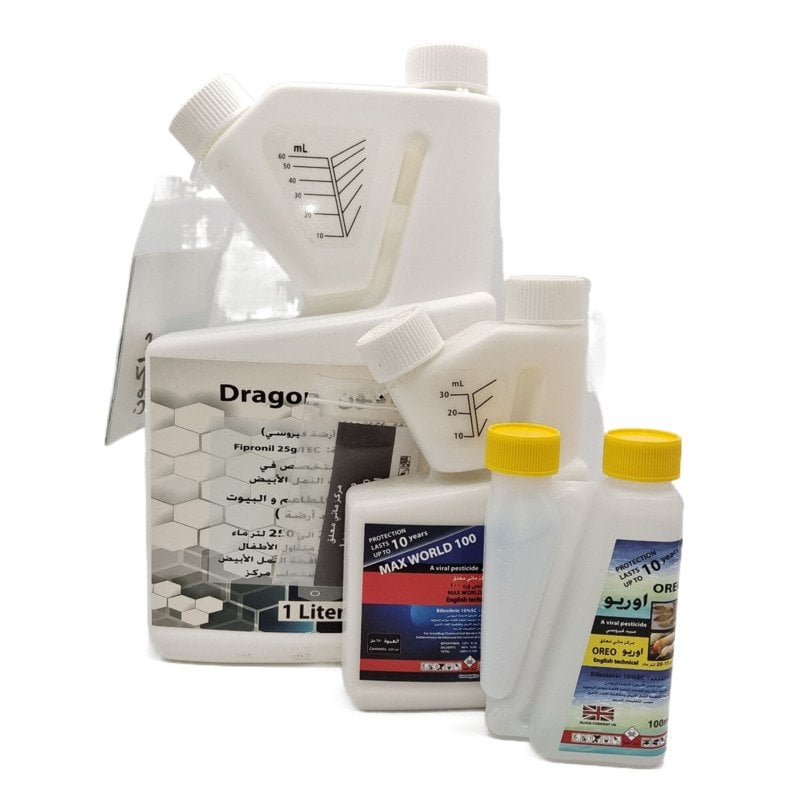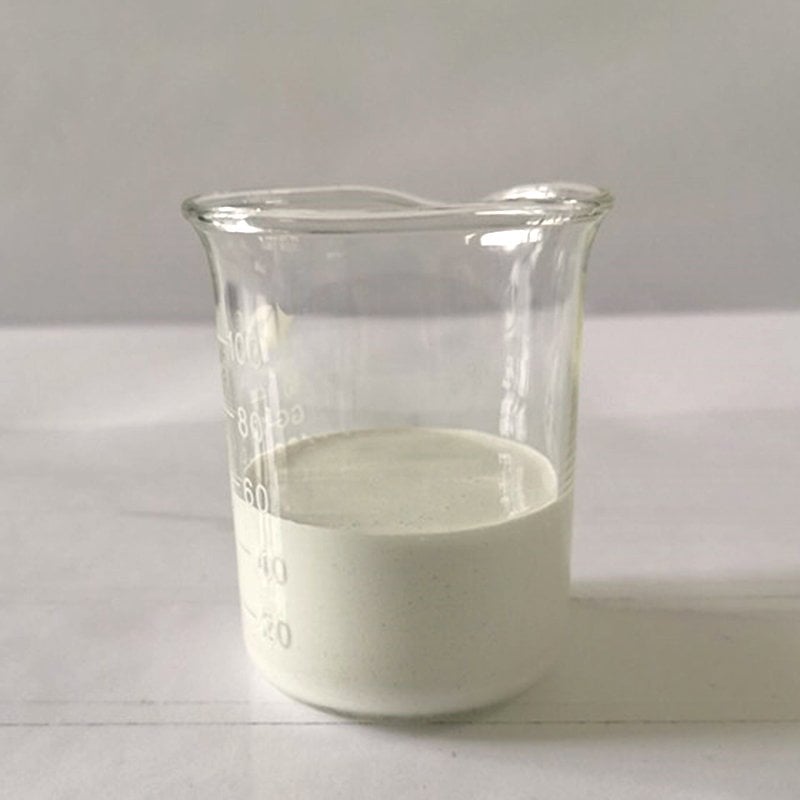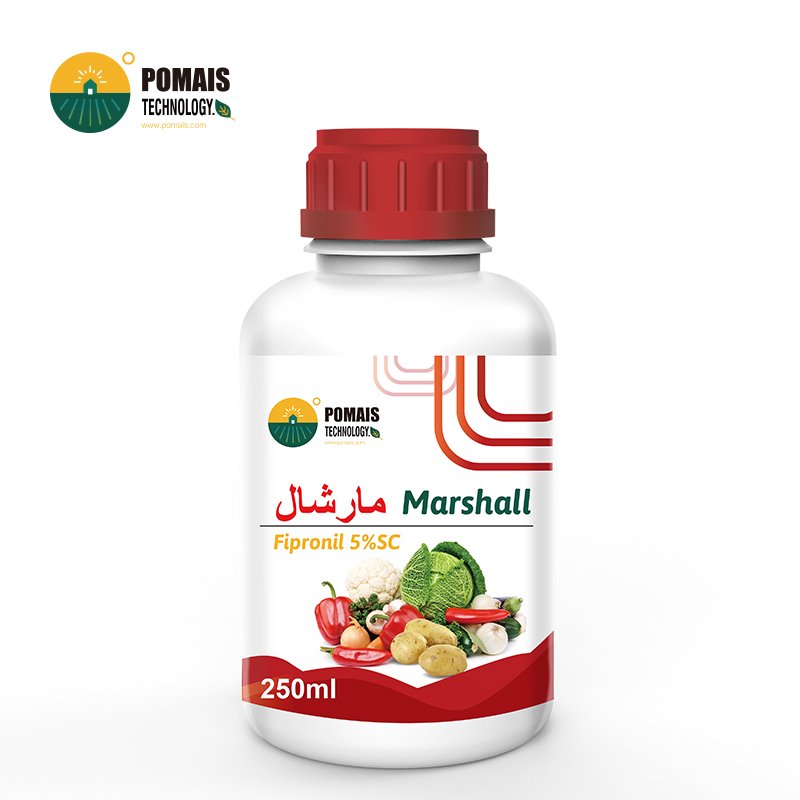Bifenthrin vs Fipronil
When selecting an insecticide for commercial or agricultural use, Bifenthrin and Fipronil are two well-known options, each offering distinct advantages. Understand the differences between them for your specific pest control requirements, whether they involve broad-spectrum pest control or targeted termite control.
Bifenthrin and Fipronil are both potent insecticides, yet they operate differently. Bifenthrin, a broad-spectrum insecticide, is widely used for general pest control, while Fipronil is a specialized insecticide ideal for termites and ants. Environmental considerations also play a role, particularly with Bifenthrin’s environmental impact on aquatic life and Fipronil’s toxicity to bees.
Bifenthrin
Bifenthrin is a synthetic pyrethroid insecticide known for its broad application in both agricultural and residential pest control. Its effectiveness against a wide range of pests has made it a popular choice for managing pests in various environments, making it an essential tool for broad-spectrum pest control.
- Mode of Action: Bifenthrin works by disrupting sodium channels in the nervous systems of insects, causing paralysis and eventual death.
- Target Pests: Effective against mosquitoes, ants, beetles, aphids, and spiders.
- Common Applications: Bifenthrin is frequently used in agricultural fields (e.g., cotton, corn, vegetables) and in urban settings for household pest control, lawn treatments, and commercial spaces.
- Formulations: Available in emulsifiable concentrates (EC), granules (GR), and wettable powders (WP).
- Environmental Considerations: Bifenthrin’s environmental impact includes significant toxicity to aquatic organisms, requiring careful management near water sources.
Fipronil
Fipronil is a phenylpyrazole insecticide, widely recognized for its effectiveness in controlling soil-based pests and termites. It is often used in termite control, as well as for ants, cockroaches, and fleas, making it a critical choice in both construction and agricultural settings.
- Mode of Action: Fipronil disrupts the GABA-gated chloride channels in the insect’s nervous system, leading to overexcitation and death.
- Target Pests: Primarily effective against termites, ants, cockroaches, fleas, and ticks.
- Common Applications: Commonly applied in termite control, ant baits, and flea treatments for pets. It is also widely used to protect crops like corn and rice from insect damage.
- Formulations: Available in suspension concentrates (SC), gel baits, and granules.
- Environmental Considerations: Fipronil’s toxicity to bees and aquatic life makes it a concern, particularly around flowering plants and water sources, where it could harm non-target species.
Bifenthrin vs Fipronil
| Criteria | Bifenthrin | Fipronil |
|---|---|---|
| Chemical Class | Pyrethroid | Phenylpyrazole |
| Mode of Action | Disrupts sodium channels in the insect’s nervous system | Blocks GABA-gated chloride channels in the nervous system |
| Target Pests | Mosquitoes, ants, beetles, spiders, agricultural pests | Termites, ants, cockroaches, fleas, ticks |
| Common Applications | Broad-spectrum pest control, agriculture, household pest control | Termite control, pet flea treatments, ant baits |
| Formulations | Emulsifiable concentrates, granules, wettable powders | Suspension concentrates, gels, granules |
| Toxicity to Humans | Low toxicity, but may cause skin or eye irritation | Low toxicity to humans, commonly used in veterinary products |
| Environmental Concerns | Bifenthrin environmental impact is significant for aquatic life | Fipronil toxicity to bees and aquatic organisms |
| Usage Restrictions | Avoid use near water bodies | Avoid use near pollinator plants and water sources |
Key Differences
- Mode of Action: Bifenthrin works by disrupting sodium channels, while Fipronil inhibits GABA-gated chloride channels in the nervous system, each with different effects on the pests’ nervous systems.
- Target Pests: Bifenthrin is ideal for broad-spectrum pest control, covering a wide range of pests, whereas Fipronil excels in termite control and other soil-based insect management.
- Environmental Impact: Bifenthrin’s environmental impact is most concerning around aquatic environments, where it is highly toxic to fish and other aquatic life. On the other hand, Fipronil’s toxicity to bees and pollinators makes it unsuitable for use in areas where bees are present or where plants rely on pollinators.
- Application Areas: Bifenthrin is a versatile solution for general broad-spectrum pest control, making it suitable for both urban and agricultural environments. Fipronil, however, is more specialized, particularly in termite control and targeted applications such as ant baits and pet flea treatments.
Conclusion
Both Bifenthrin and Fipronil are highly effective insecticides, but the best choice depends on your specific needs. If you’re seeking broad-spectrum pest control across a variety of environments, Bifenthrin is an excellent option. However, for specialized applications like termite control and targeting ants or fleas, Fipronil is more appropriate.
Environmental considerations are essential when choosing between these products. Bifenthrin’s environmental impact requires careful use near aquatic environments, while Fipronil’s toxicity to bees means that caution should be exercised when applying it around flowering plants.
By considering the specific pest challenges, environmental factors, and intended application, you can choose the right insecticide for your pest management needs.
Extended Reading
Is Fipronil Better Than Bifenthrin?
Whether Fipronil is better than Bifenthrin depends on the pest you’re targeting. Fipronil is highly effective for controlling termites and ants, particularly in soil treatments, whereas Bifenthrin is a more versatile insecticide suitable for a broader range of pests, including household and agricultural insects.
What is Better Than Bifenthrin?
Alternatives to Bifenthrin vary depending on the specific pest and environment. For soil-dwelling pests like termites, Fipronil might be more effective. Other alternatives include Permethrin and Cypermethrin, which belong to the same pyrethroid family but may have different formulations and applications.
Does Bifenthrin Kill All Insects?
While Bifenthrin is a broad-spectrum insecticide, it does not kill all insects. It is highly effective against common pests such as mosquitoes, ants, spiders, and beetles, but its impact on non-target insects, including pollinators like bees, should be considered.
What Are the Disadvantages of Fipronil?
Fipronil has notable disadvantages, particularly its high toxicity to bees and aquatic organisms. Its environmental impact is significant, especially when used near flowering plants or water sources. Additionally, resistance can develop in certain pests, limiting its long-term effectiveness.
Does Rain Wash Away Bifenthrin?
Yes, rain can reduce the effectiveness of Bifenthrin if applied shortly before rainfall. It is recommended to apply Bifenthrin in dry conditions and ensure ample drying time to allow it to bind to surfaces for maximum efficacy.
How Long Does Bifenthrin Take to Kill?
Bifenthrin typically starts working within a few hours of application, but it may take 1–2 days to fully eliminate an infestation, depending on the pest type and environmental conditions.
What Insects Does Fipronil Control?
Fipronil is highly effective against termites, ants, cockroaches, fleas, and ticks. It is often used in termite baits and pet flea treatments due to its targeted action and long-lasting residual effects.
What Bugs Does Bifenthrin Kill?
Bifenthrin controls a wide range of pests, including mosquitoes, ants, beetles, aphids, spiders, and more. It is frequently used in both agricultural and household pest control for its broad-spectrum efficacy.
When selecting an insecticide for commercial or agricultural use, Bifenthrin and Fipronil are two well-known options, each offering distinct advantages. Understand the differences between them for your specific pest control requirements, whether they involve broad-spectrum pest control or targeted termite control.
Bifenthrin and Fipronil are both potent insecticides, yet they operate differently. Bifenthrin, a broad-spectrum insecticide, is widely used for general pest control, while Fipronil is a specialized insecticide ideal for termites and ants. Environmental considerations also play a role, particularly with Bifenthrin’s environmental impact on aquatic life and Fipronil’s toxicity to bees.
Bifenthrin
Bifenthrin is a synthetic pyrethroid insecticide known for its broad application in both agricultural and residential pest control. Its effectiveness against a wide range of pests has made it a popular choice for managing pests in various environments, making it an essential tool for broad-spectrum pest control.
- Mode of Action: Bifenthrin works by disrupting sodium channels in the nervous systems of insects, causing paralysis and eventual death.
- Target Pests: Effective against mosquitoes, ants, beetles, aphids, and spiders.
- Common Applications: Bifenthrin is frequently used in agricultural fields (e.g., cotton, corn, vegetables) and in urban settings for household pest control, lawn treatments, and commercial spaces.
- Formulations: Available in emulsifiable concentrates (EC), granules (GR), and wettable powders (WP).
- Environmental Considerations: Bifenthrin’s environmental impact includes significant toxicity to aquatic organisms, requiring careful management near water sources.
Fipronil
Fipronil is a phenylpyrazole insecticide, widely recognized for its effectiveness in controlling soil-based pests and termites. It is often used in termite control, as well as for ants, cockroaches, and fleas, making it a critical choice in both construction and agricultural settings.
- Mode of Action: Fipronil disrupts the GABA-gated chloride channels in the insect’s nervous system, leading to overexcitation and death.
- Target Pests: Primarily effective against termites, ants, cockroaches, fleas, and ticks.
- Common Applications: Commonly applied in termite control, ant baits, and flea treatments for pets. It is also widely used to protect crops like corn and rice from insect damage.
- Formulations: Available in suspension concentrates (SC), gel baits, and granules.
- Environmental Considerations: Fipronil’s toxicity to bees and aquatic life makes it a concern, particularly around flowering plants and water sources, where it could harm non-target species.
Bifenthrin vs Fipronil
| Criteria | Bifenthrin | Fipronil |
|---|---|---|
| Chemical Class | Pyrethroid | Phenylpyrazole |
| Mode of Action | Disrupts sodium channels in the insect’s nervous system | Blocks GABA-gated chloride channels in the nervous system |
| Target Pests | Mosquitoes, ants, beetles, spiders, agricultural pests | Termites, ants, cockroaches, fleas, ticks |
| Common Applications | Broad-spectrum pest control, agriculture, household pest control | Termite control, pet flea treatments, ant baits |
| Formulations | Emulsifiable concentrates, granules, wettable powders | Suspension concentrates, gels, granules |
| Toxicity to Humans | Low toxicity, but may cause skin or eye irritation | Low toxicity to humans, commonly used in veterinary products |
| Environmental Concerns | Bifenthrin environmental impact is significant for aquatic life | Fipronil toxicity to bees and aquatic organisms |
| Usage Restrictions | Avoid use near water bodies | Avoid use near pollinator plants and water sources |
Key Differences
- Mode of Action: Bifenthrin works by disrupting sodium channels, while Fipronil inhibits GABA-gated chloride channels in the nervous system, each with different effects on the pests’ nervous systems.
- Target Pests: Bifenthrin is ideal for broad-spectrum pest control, covering a wide range of pests, whereas Fipronil excels in termite control and other soil-based insect management.
- Environmental Impact: Bifenthrin’s environmental impact is most concerning around aquatic environments, where it is highly toxic to fish and other aquatic life. On the other hand, Fipronil’s toxicity to bees and pollinators makes it unsuitable for use in areas where bees are present or where plants rely on pollinators.
- Application Areas: Bifenthrin is a versatile solution for general broad-spectrum pest control, making it suitable for both urban and agricultural environments. Fipronil, however, is more specialized, particularly in termite control and targeted applications such as ant baits and pet flea treatments.
Conclusion
Both Bifenthrin and Fipronil are highly effective insecticides, but the best choice depends on your specific needs. If you’re seeking broad-spectrum pest control across a variety of environments, Bifenthrin is an excellent option. However, for specialized applications like termite control and targeting ants or fleas, Fipronil is more appropriate.
Environmental considerations are essential when choosing between these products. Bifenthrin’s environmental impact requires careful use near aquatic environments, while Fipronil’s toxicity to bees means that caution should be exercised when applying it around flowering plants.
By considering the specific pest challenges, environmental factors, and intended application, you can choose the right insecticide for your pest management needs.
Extended Reading
Is Fipronil Better Than Bifenthrin?
Whether Fipronil is better than Bifenthrin depends on the pest you’re targeting. Fipronil is highly effective for controlling termites and ants, particularly in soil treatments, whereas Bifenthrin is a more versatile insecticide suitable for a broader range of pests, including household and agricultural insects.
What is Better Than Bifenthrin?
Alternatives to Bifenthrin vary depending on the specific pest and environment. For soil-dwelling pests like termites, Fipronil might be more effective. Other alternatives include Permethrin and Cypermethrin, which belong to the same pyrethroid family but may have different formulations and applications.
Does Bifenthrin Kill All Insects?
While Bifenthrin is a broad-spectrum insecticide, it does not kill all insects. It is highly effective against common pests such as mosquitoes, ants, spiders, and beetles, but its impact on non-target insects, including pollinators like bees, should be considered.
What Are the Disadvantages of Fipronil?
Fipronil has notable disadvantages, particularly its high toxicity to bees and aquatic organisms. Its environmental impact is significant, especially when used near flowering plants or water sources. Additionally, resistance can develop in certain pests, limiting its long-term effectiveness.
Does Rain Wash Away Bifenthrin?
Yes, rain can reduce the effectiveness of Bifenthrin if applied shortly before rainfall. It is recommended to apply Bifenthrin in dry conditions and ensure ample drying time to allow it to bind to surfaces for maximum efficacy.
How Long Does Bifenthrin Take to Kill?
Bifenthrin typically starts working within a few hours of application, but it may take 1–2 days to fully eliminate an infestation, depending on the pest type and environmental conditions.
What Insects Does Fipronil Control?
Fipronil is highly effective against termites, ants, cockroaches, fleas, and ticks. It is often used in termite baits and pet flea treatments due to its targeted action and long-lasting residual effects.
What Bugs Does Bifenthrin Kill?
Bifenthrin controls a wide range of pests, including mosquitoes, ants, beetles, aphids, spiders, and more. It is frequently used in both agricultural and household pest control for its broad-spectrum efficacy.

